Plum variety Manchurian beauty
The Manchu beauty is an old, medium-ripening plum. The variety was selected among the seedlings of Chinese plum (Prunus salicina) at the Yaomyn station in Northern Manchuria by the gardener Ivanov. In 1928, to the Far East, to the city of Voroshilov (now Ussuriisk), the variety was sent by A.A. Taratukhin. Then it was studied, multiplied and disseminated by N.N. Tikhonov. Many scientists agreed that the Manchurian beauty combines the features of three types of plum - Chinese, Ussuri (Prunus ussuriensis) and Simon (Prunus simonii).
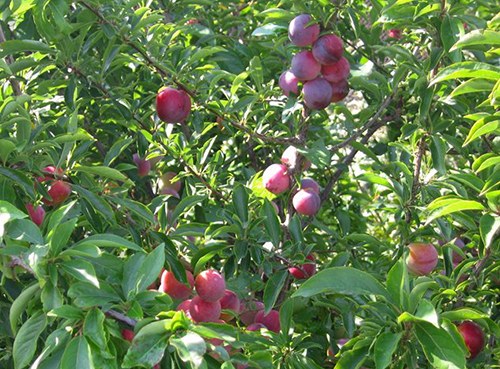
For a long time, since 1947, this variety was included in the standard assortment of the Ural, West Siberian, East Siberian and Far Eastern regions. In the conditions of the central zone of the USSR, it was tested since 1933, but it turned out that it grows weakly here and sometimes wood freezes. This is due to the inconsistency of climatic conditions with the biological requirements of the variety. Currently, plantations of this plum are found in the gardens of Siberia, the Far East, as well as the European part of Russia.
Small trees, natural dwarfs (up to 2 meters in height), are characterized by fast growth rates. The crown is thickened, rounded. The stem is weakly expressed. On the branches, the bark of a flaky type, brown-gray color. Slightly curved shoots, thin, with numerous light lenticels, brown-red colored. The internodes are very short. A distinctive feature of the Manchurian beauty is the high awakening of the buds, which leads to a strong branching of the seedlings already in the nursery. Vegetative buds are small in size, oval in shape, fruit buds are large in size, oval in shape. Fruits are formed mainly on bouquet branches.
Leaves are small (length - 10.5 cm, width - 4 cm), lanceolate or ellipsoid, with a sharp tip and a narrow wedge-shaped base, along the edge - crenate serration. The leaf blade is dark green, smooth, slightly glossy, concave, lowered, the main vein is slightly curved. Petioles are dark anthocyanin color.
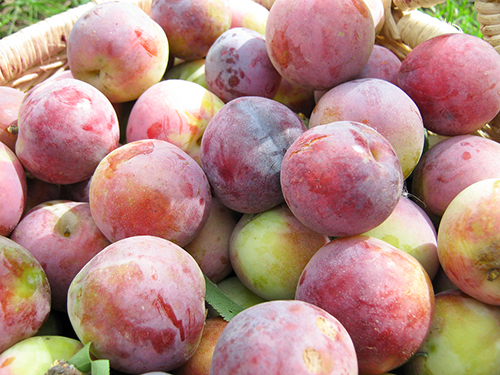
Inflorescences are three-flowered. The flowers themselves are very small in size, painted white. The flowering period occurs at a very early date: flowers bloom first, and only then leaves.
The fruits are of medium size (the average weight of the plum is 15 - 20 g, the maximum is 30 g), round or wide-heart-shaped, the base is flat, the funnel is deep, narrow. Among the Ussuri plums, this is the largest one. The main color of the fruit is yellow-orange, the integumentary color is an almost continuous dark-burgundy blurred blush. The skin is without any special taste, thin, of medium density, covered with an intense bluish bloom. The abdominal suture is not pronounced. The stalks are short, thick, sufficiently firmly attached to the fruit. The bones are of medium size, oval-pointed, well-made, semi-lagging from the pulp.
The pulp is greenish-yellow in color, rather dense, in consistency - loose, juicy, slightly aromatic, with a good taste - sour-sweet, pleasant, refreshing. By biochemical composition, the fruits contain: dry substances (17 - 24%), the amount of sugars (8 - 15%), titratable acids (0.9 - 1.7%), tannins (0.37 - 041%), ascorbic acid (7 - 9 mg / 100 g), P-active substances (325 - 350 mg / 100 g). A variety of universal use - suitable both fresh and for canning.
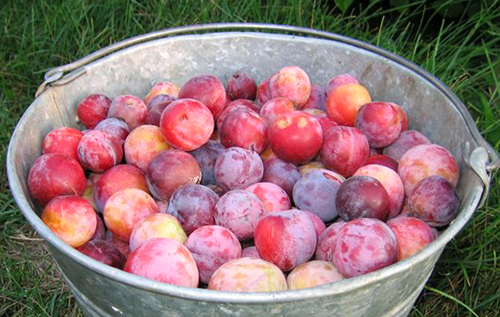
Fruit ripening period - late August - early September. Harvesting is recommended a few days before full ripeness, since ripe fruits crumble very quickly. The early fruiting rate is very high: the trees enter the fruiting season in the 3rd year after planting in the garden as one-year-olds. Sometimes fruiting begins in the nursery. Productivity is moderate (at the level of control varieties). From 5 to 6-year-old trees, 15 to 24 kg of fruits are harvested. The average yield per tree is 10.1 kg.
The general level of winter hardiness of trees and flower buds is somewhat inferior to most local Far Eastern varieties, but in general it is quite high. Drought resistance is also high.The variety is resistant to rubella (widespread only in the Far East) and clotterosporia (perforated spot), but susceptible to moniliosis (monilial burn) and unstable to damping off.
This plum is self-fertile. A good pollinator for her is Manchurian Prune.
This variety is of value in breeding work, since it conveys its valuable traits to the offspring well. With his participation A.N. Benjaminov created varieties Zarya and Sister Zarya; GT Kazmin - varieties Amurskaya early, Galka, Katerina, Kolkhoznitsa, Large-fruited, Skazka, Khabarovskaya early; at the Research Institute of Horticulture, the varieties Chemalskaya and Pamyati Dutov were bred, in the Sverdlovsk Horticultural Breeding Station - Zavet.
The main advantages of the Manchurian beauty plum: high early maturity and winter hardiness, drought resistance, good taste of the fruit.
The main disadvantage is susceptibility to certain diseases.
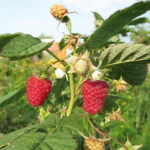

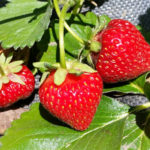
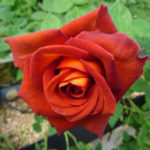
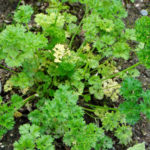
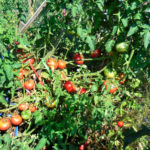



The trunk for the winter needs to be tied with sphagnum moss and then everything will be OK !!!
Plum is very tasty: fragrant, rich sweet and sour taste. Mine is almost always closer to the maximum size. We have two trees of this variety, and on one of them the fruits for some reason begin to ripen two or three weeks earlier than the other, so we have been eating these wonderful plums for more than a month. Among the disadvantages is a tendency to cracking and shedding when too abundant and irregular watering. And of course, the moth cannot but love such a yummy! Flies to her from all over the area.